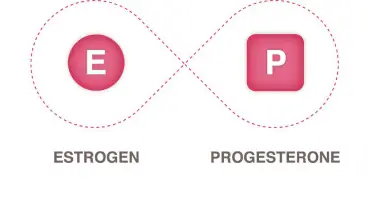Hormone Therapy
How Can Hormones Affect The Growth Of Breast Cancer?
Female hormones, which are estrogen and progesterone, are chemicals produced by glands in the body. Normally, these hormones help regulate body cycles, such as menstruation. However, sometimes these same hormones can cause cancer to grow.

Upon diagnosis, a pathologist will perform tests on the breast cancer cells to determine if they have receptors that feed on estrogen or progesterone, thereby stimulating their growth. If the cancer cells have these receptors, the cancer is considered estrogen receptor-positive (ER+), progesterone receptor-positive (PR+), or both (ER/PR+).
Based on the pathologist’s findings, your doctor may recommend hormone therapy drugs. One option are SERMs (selective estrogen receptor modulators), which block the body’s natural estrogen from attaching to breast cancer cells and are given to premenopausal women. Another option are AIs (aromatase inhibitors), which help to lower estrogen levels in the body and are designed for postmenopausal women. Both types of drugs help to starve breast cancer cells by cutting off their supply of hormones.
Generally, the benefits of using hormone therapy and chemotherapy together have a much greater combined effect than using either one alone. If your breast cancer is positive for hormone receptors (ER+, PR+, or ER/PR+), your doctor may recommend both therapies.
Hormone Blockers To Treat Breast Cancer
SERMs (Selective Estrogen Receptor Modulators)
Often referred to as “hormone blockers,” SERMs work to block the effects of estrogen on breast tissue. SERMs block estrogen-shaped openings in the cells, preventing estrogen from attaching to the cells and further fueling cancer growth. SERMs are designed for premenopausal women.
Hormone Inhibitors To Treat Breast Cancer
AIs (Aromatase Inhibitors)
Often referred to as “hormone inhibitors,” aromatase inhibitors (AIs) work to lower estrogen levels in the body by reducing the body’s hormone production. When breast cancer cells are cut off from the “food supply” of estrogen, the tumor begins to starve and die.
Aromatase inhibitors are designed for postmenopausal women. Many women assume their bodies no longer produce female hormones after menopause, but adrenal glands continue to manufacture female hormones. Estrogen, in particular, is also stored in women’s body fat.
When Are Hormone Therapies Used?
Aromatase inhibitor (AI) and hormone blocker (SERM) options may depend on a person’s age and stage of life.
- Aromatase inhibitors are only used in postmenopausal women. They can be given to premenopausal women if steps are taken by the treatment team to put the ovaries to sleep by blocking the ovaries from producing estrogen or progesterone.
- Hormonal therapy may also be called anti-hormone treatment and can be thought of as the opposite of hormone replacement therapy (HRT), which is sometimes given for a short period of time to women who are experiencing menopausal symptoms. If pathology tests show that the tumor has hormone receptors, referred to in the pathology report as being estrogen receptor-positive (ER+) and/or progesterone-receptor positive (PR+), then hormonal therapy may be recommended after the completion of acute treatments, such as surgery, chemotherapy, and radiation.
- Hormonal therapy keeps breast cancer cells from receiving or using the natural female hormones in the body (estrogen and progesterone) which they need to grow. Hormonal therapy also blocks the ability of healthy breast cells to receive hormones that could stimulate breast cancer cells to regrow in the form of recurrence of the breast cancer within the breast or elsewhere in the body.
Hormone Therapy Options Before Menopause
If you have not gone through menopause, the options may include:
Tamoxifen
This SERM drug can prevent the original breast cancer from returning and can also help prevent the development of new breast cancers in the other breast or elsewhere in the body in the future. It is in pill form and must be taken every day, usually for a time period of 5 years. In general, the side effects of tamoxifen are similar to some of the symptoms of menopause.

The most common side effects of tamoxifen are hot flashes and vaginal discharge. Other side effects may include irregular menstrual periods, thinning bones, headaches, fatigue, nausea, vomiting, vaginal dryness or itching, irritation of the skin around the vagina, and skin rash. Serious side effects are rare, but they include blood clots, stroke, uterine cancer, and cataracts.
LH-RH agonist
This type of drug can prevent the ovaries from making estrogen, causing the body’s estrogen level to fall slowly. Examples of LH-RH agonist drugs are leuprolide and goserelin. This type of drug may be given by injection under the skin in the stomach area. Side effects may include hot flashes, headaches, weight gain, thinning bones, and bone pain. This is sometimes called chemical menopause and enables the patient to take aromatase inhibitor drugs more commonly given to postmenopausal women.
Surgical removal of ovaries
Before menopause, the ovaries are the body’s main source of estrogen. When the ovaries are surgically removed, this source of estrogen is also removed. (A woman who has gone through menopause wouldn’t benefit from this kind of surgery because her ovaries produce little to no estrogen.) When the ovaries are removed, menopause occurs right away. This is known as surgical menopause and can enable the patient to take aromatase inhibitor drugs. The side effects are often more severe than those caused by natural menopause but taper off with time. Your oncology team can suggest ways to cope with these side effects.
It is important to note that if a patient receives LH-RH agonist treatment or has her ovaries surgically removed, she will likely be placed on an aromatase inhibitor instead of tamoxifen, but both remain options.
Hormone Therapy Options After Menopause
If you have gone through menopause, hormone therapy options may include:
- Aromatase inhibitor (AI): This type of drug prevents the body from making a form of estrogen called estradiol. Examples of AIs are anastrazole, exemestane, and letrozole. AIs are pills that are taken daily. Common side effects include hot flashes, nausea, vomiting, and painful bones or joints. Serious side effects include thinning bones and an increase in cholesterol.
- Tamoxifen: Tamoxifen is a type of hormone therapy drug that is given for at least 5 years after breast cancer treatment. Women who have gone through menopause receive tamoxifen for 2 to 5 years. If tamoxifen is given for less than 5 years, then an aromatase inhibitor often is given to complete the 5 years. Some women receive hormone therapy, such as tamoxifen, for more than 5 years.
There are special situations, based on the risk of breast cancer recurring, that may require being on some form of hormone therapy for up to 10 years. Research has been conducted and more is underway to determine if there is a benefit in taking hormonal therapy for longer than 5 years, and some research studies have demonstrated that there may be benefits in switching from one hormonal therapy agent to another during the 5-year period.
Your oncologist will discuss with you the most appropriate hormonal therapy regimen based on your breast cancer pathology and your age. It is very important to take prescribed hormone therapy pills every day. Not adhering to the daily schedule and dosage as prescribed may cause you not to reap the benefits of these drugs. Overall, hormonal therapy can reduce the risk of breast cancer recurrence by 50%.
Hormone therapy drugs can be expensive. If you need financial help in paying for these medications, contact the medical oncology nurse practitioner, patient navigator, or social worker at your medical facility to receive information on how to get these drugs at a discount.
Based on reported side effects of hormone therapy drugs, sexual dysfunction can occur. If you are experiencing a drop in libido or vaginal dryness resulting in pain during intercourse, make your oncologist aware as there may be some options for decreasing these side effects.
Hormone Therapy Options For Advanced-Stage Breast Cancer Patients
Women with metastatic breast cancer or regionally advanced breast cancer (Stage 3) that carries a high risk of progressing to Stage 4 breast cancer may be given a CDK4/6 inhibitor along with endocrine therapy, a form of hormone therapy. A CDK4/6 inhibitor is a drug given to women with advanced cancer that is ER+ and HER2-.
Source: American Cancer Society



